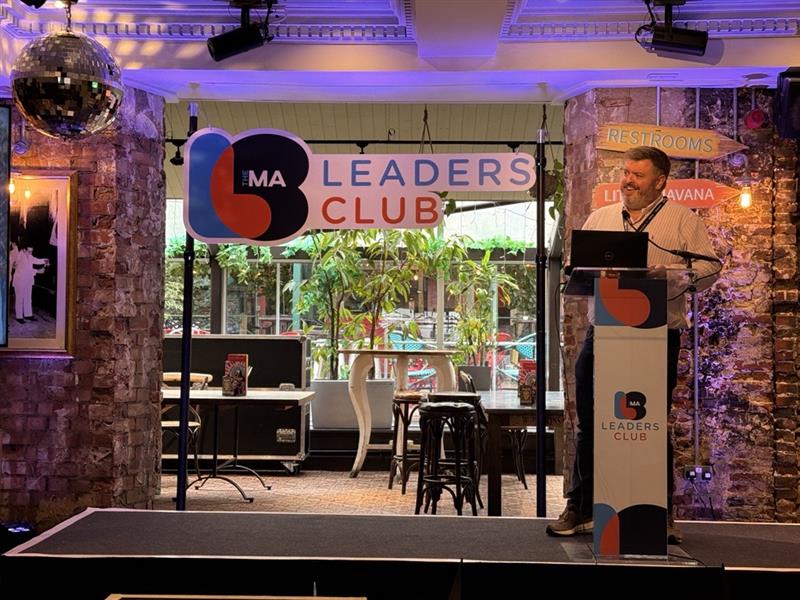However, data from fellow insights expert Lumina Intelligence stated independent pub operators have been most affected by rising operating costs.
And despite research differences, one thing that is a must for all operators is to find a way to attract more customers – whether that be from opening earlier to offering something that appeals to gamers, food lovers or screened sports.
CGA by NIQ client director Chris Sterling told an MA Leaders Club in Norwich earlier this month while independents – pubs that are owned by one person or a small group and not part of a branded chain – have seen site openings reach 2,429, there have been 2,036 closures between December 2023 and December 2024.
Almost on a par, managed sites – where a pub’s manager is employed, usually by a larger pub group and includes managed estates of traditionally tenanted pubcos – have seen 1,313 opening and 1,238 closures during the same period. However, leased & tenanted sites – owned by pubcos and leased/licensed to individuals and are often tied to a brewery or pubco – have only seen 343 opening versus 804 closures.
There’s even a resurgence in nightclubs.
CGA by NIQ client director Chris Sterling
Sterling said: “Sports & social and food-led value sites are feeling the pinch the most.
“Positively, pubs and bars doing really well and coming back strongly and there’s even a resurgence in nightclubs for those who remember the Covid era – it was an absolutely terrible time if you ran or were involved in nightclubs and had the slowest reopening of all.”
He explained there are slightly more openings than closures but the mainstream press prefers to focus on the number of closures and said: “In terms of tenure, it’s managed sites and independents that are leading the way. Leased & tenanted has had a really tough time. There are a number of factors such as churn in the market and the struggle to find lessees.
“It’s really about the consumers – bums on seats. What are their behaviours and what do we need to be aware of?
“People are drinking that little bit less and are not going out quite as often but, when they do, they’re choosing more expensive drinks and prepared to spend that little bit more than they were before. The trade-off for that is that they demand a better experience and this also fits with the fact bottom-end venues are the ones that are closing.”
There should be more bums on seats
Meanwhile, the Lumina Intelligence UK Pub & Bar Market Report from August 2025 predicts the UK pub & bar market will grow by 1.9% in 2025 to reach £24.1bn, trailing behind the total eating out market at 2.8% growth.
Managed, franchised and branded operators now contribute 51% of market value though they comprise just over a quarter of sites, highlighting the protective power of scale and investment capital.
However, outlet decline is expected to impact all pub formats, with eight net closures expected per week this year.
On how to capture extra custom, CGA by NIQ’s Sterling stated concern over total visits being down and asked how can pubs and bars attract more people into the industry? “There’s fewer venues so there should be more bums on seats for the venues that remain but that isn’t quite happening,” he pondered.
“For those that are doing it right, they’re changing their pattern… they’re changing what they’re doing and it’s very different from post-Covid. The most engagement and the emphasis is on earlier day parts. People are going out a bit earlier and it’s a really important issue to make sure your offer plays into this.
“Special occasions don’t seem as prevalent for consumers and they don’t seem quite as interested in it in the later night period.
Sport in home is dying off and people are getting rid of their subscriptions.
CGA by NIQ client director Chris Sterling
“According to our business leaders survey, a third of operators have said they’re looking at new audiences and trying to encourage new people through the door while others are looking at new occasions such as that earlier day part.
“Also, [pubs need to] look at the occasions that people are going out for such as watching sports, higher-tempo drinks – like shots and cocktail trees, etc, and formal meals to celebratory occasions as well.
“Sport in home is dying off and people are getting rid of their subscriptions in favour of drinking and enjoying it with mates. It’s also key to offer food that matches with sports such as finger food and easy-to-eat small plates.”
He explained customers want the experience, new concepts and challenging drink offerings and they will experiment when they go to a new venue or trying a new style of occasion.
Looking at Gen Z – who would be a maximum of 28 years old in 2025 – Sterling wanted to do some “myth-busting” about the generation and said we’ve heard they don’t go out anymore and don’t drink anymore but said: “Yes, they are thinner and stronger, they go to the gym more but they have more choices than we did when we were young.
Very important demographic
“They are going out, they are drinking more and this includes medium earners not just the top-end earners. They are preferring to go out in city centres.
“They’re a very important demographic across the day parts and they are also propping up that late-night trade.
“Why wouldn’t you want them in your venues? Why wouldn’t you trying to attract those young people? They are putting the on-trade as their biggest treat, which is ahead of holidays and buying clothes.”
Both Sterling and Lumina talk about the ‘third space’ – a social environment separate from home (first place) and work (second place), where people can gather, socialise and build community – which has the potential for pubs and bars to provide something different.
If a customer can go to a spectacular venue and get spectacular service, it can justify £7, £8 or £9 for a pint.
CGA by NIQ client director Chris Sterling
Lumina said: “Operators are increasingly driving growth beyond traditional food and drink sales. This includes event-led programming, accommodation (pubs with rooms), and third-space concepts like co-working.
“Hybrid hospitality models, such as Permit Room – a Dishoom spinoff – which combines lodging and co-working spaces, unlocks new revenue, boosts resilience and extends customer dwell time, crucial for upping spend.”
Sterling told the MA Leaders Club: “When [Gen Z] are choosing where to go the ‘third space’ is top of their list.
“This could be places that offer competitive socialising and the things being offered in these places include different food and drink offerings – it’s about that choice. Is that something you could replicate in your venue?
“The occasions they are enjoining at these venues include sport, although that’s slightly down but is still very important to them, but also live music and karaoke.”
CGA by NIQ data showed 49% of Gen Z consumers drink in third space venues at least weekly in a three-month period, which is 8ppts (percentage points) higher than Millennials, 29ppts higher than Gen X and 38ppts above Baby Boomers.
He concluded: “People are seeking value but don’t mistake value for cheap. If a customer can go to a spectacular venue and get spectacular service, it can justify £7, £8 or £9 for a pint.”


